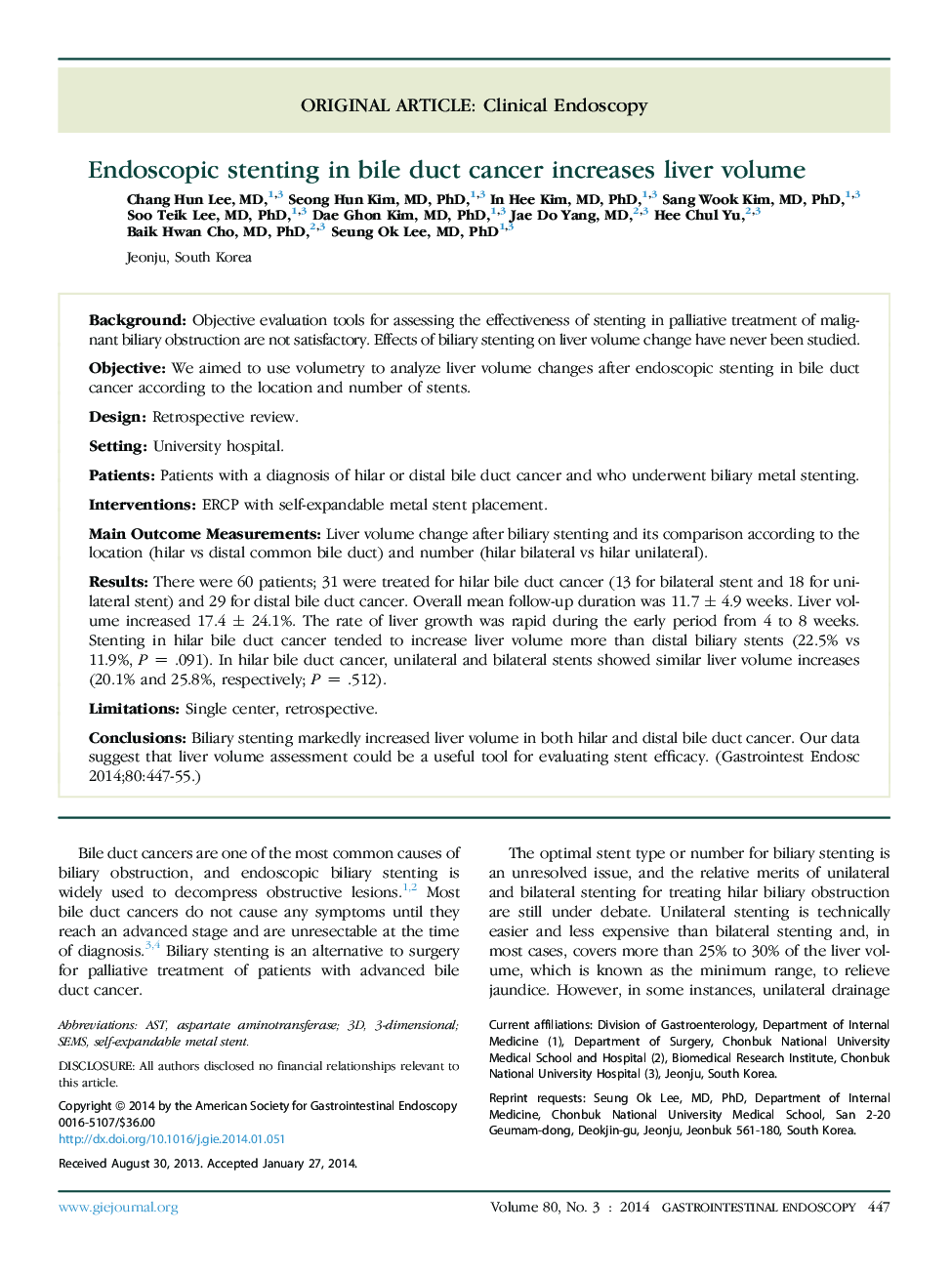| کد مقاله | کد نشریه | سال انتشار | مقاله انگلیسی | نسخه تمام متن |
|---|---|---|---|---|
| 3303210 | 1210311 | 2014 | 9 صفحه PDF | دانلود رایگان |
BackgroundObjective evaluation tools for assessing the effectiveness of stenting in palliative treatment of malignant biliary obstruction are not satisfactory. Effects of biliary stenting on liver volume change have never been studied.ObjectiveWe aimed to use volumetry to analyze liver volume changes after endoscopic stenting in bile duct cancer according to the location and number of stents.DesignRetrospective review.SettingUniversity hospital.PatientsPatients with a diagnosis of hilar or distal bile duct cancer and who underwent biliary metal stenting.InterventionsERCP with self-expandable metal stent placement.Main Outcome MeasurementsLiver volume change after biliary stenting and its comparison according to the location (hilar vs distal common bile duct) and number (hilar bilateral vs hilar unilateral).ResultsThere were 60 patients; 31 were treated for hilar bile duct cancer (13 for bilateral stent and 18 for unilateral stent) and 29 for distal bile duct cancer. Overall mean follow-up duration was 11.7 ± 4.9 weeks. Liver volume increased 17.4 ± 24.1%. The rate of liver growth was rapid during the early period from 4 to 8 weeks. Stenting in hilar bile duct cancer tended to increase liver volume more than distal biliary stents (22.5% vs 11.9%, P = .091). In hilar bile duct cancer, unilateral and bilateral stents showed similar liver volume increases (20.1% and 25.8%, respectively; P = .512).LimitationsSingle center, retrospective.ConclusionsBiliary stenting markedly increased liver volume in both hilar and distal bile duct cancer. Our data suggest that liver volume assessment could be a useful tool for evaluating stent efficacy.
Journal: Gastrointestinal Endoscopy - Volume 80, Issue 3, September 2014, Pages 447–455
